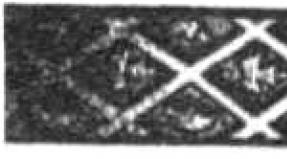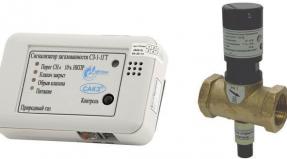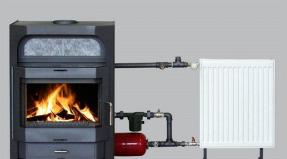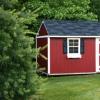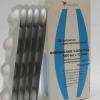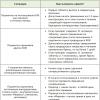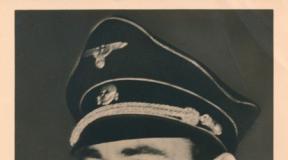Why can't you wear tight shoes? Consequences of wearing tight shoes What happens if you wear tight shoes
Today it is hard to believe that people once walked barefoot at any temperature and in any terrain. Currently, the abundance of shoe stores and the wealth of designer models is simply frightening. In pursuit of fashion trends, people buy shoes that do not fit their foot shape and size. And the female half, trying to reduce their size, wears shoes that are too tight, which subsequently cause corns, bursitis and deformation of the fingers. Buying the right shoes is not just a matter of personal style, but a vital factor. Let's look at the consequences of wearing tight shoes and the easiest way to break in already bought tight shoes.
The average person travels 185,000 kilometers in their lifetime. With each step, he strains his legs more and more, so shoes should protect and support him. Unfortunately, many simply do not understand the importance of the comfort of footwear. Women's feet suffer from an overabundance of hormones during pregnancy, which leads to an increase in size. Puffiness also occurs from taking medications that retain water in the body. Even in young people, feet swell by the end of the day through long walking and physical activity.
Tight shoes have short-term and long-term negative effects that affect a person's performance.
Short term foot problems:
- Calluses are caused by prolonged pressure on a specific area. They have a point, discrete shape and show pain when pressed on the site. Calluses can be hard or soft if located between the fingers, and they can also contain blood vessels or nerve fibers.
- Ingrown toenails and fungal infections provoke too narrow shoe socks. In addition, constant pressure can cause the nail bed to lift away from the skin of the finger. Excessive crowding also creates a humid environment in which fungal spores develop.
- Athlete's foot is caused by dermatophyte fungi that live on the skin. Constantly wet and sweaty areas of the feet, especially with excessive proximity to the fingers, provoke redness, whitish peeling, bubbles and cracks.
- The constant violation of blood circulation causes fatigue and swelling of the legs, which leads to varicose veins.
 Tight shoes can lead to irreversible damage not only to the feet, but to the entire body.
Tight shoes can lead to irreversible damage not only to the feet, but to the entire body.
Long term problems:
- Flat feet are often manifested by tightness during walking in the Achilles tendon and muscles. The deformation in the ligaments that support the arch of the foot loses its springiness, so the entire load is transferred to the knee and hip joints. With flat feet in a person, the spine suffers significantly and posture is disturbed.

- Tight shoes, especially those with heels, cause frequent back pain. With such walking, the spinal muscles act intensified, which leads to their overexploitation and postural changes.
- Prolonged leg overload can cause arthritis as well as knee pain, especially in the case of high heels.
- Tight shoes can also lead to bone deformities, such as bursitis (swelling of the big toe) or a lump on the heel.

Why do feet get cold in tight shoes?
The physical cause of circulatory disorders and the failure of metabolic processes in the legs lead to rapid cooling of the limbs. Another factor is the minimum presence of air with low thermal conductivity, i.e. tight shoes are a low thermal insulator. Only spacious boots allow you to keep the heat emanating from your feet.

Tight shoes consequences for the toes
Wearing too tight shoes for a long time can cause bone deformity and cause the following diseases:
- Claw deformity of the fingers (usually the second or third) is manifested by twisting of the phalanges. They are in a compressed state, and improper distribution of pressure causes corns.

- Increased risk of ingrown toenails. Often, tight shoes have a narrow toe, which causes increased pressure on the nails.
- Big toe bunion is characterized by an increase in bone or tissue around the joint at the base of the big toe. It can rotate towards the second toe and cause swelling and pain when walking.
- People with diabetes often suffer from nerve damage (peripheral neuropathy) in their feet without feeling skin irritation. Tight shoes lead to blisters or sores that progress quickly.

Calluses from tight shoes
Too tight shoes with constant wear cause rubbing, blisters and even calluses on sensitive skin. Callosities cannot go away on their own. Usually they do not cause any pain, but the fingers do not look very beautiful. Simply covering the calluses with a band-aid will not solve the problem, and ignoring it can cause infection or a serious complication.
Calluses develop from a collection of dead skin cells, forming thick, rough areas. They contain a tapered core with a dot that can press on a nerve, causing pain. Calluses usually form on the tops, sides, and tips of the toes, as well as on the soles of the feet.
There are several types of thickenings: dry, ingrown, old, internal and bone. They are also divided into soft (blisters) and hard (corns and heel spurs).
Symptoms of callus formation:
- thickened, rough patch of skin;
- keratinized tubercle;
- pain under the skin when walking;
- dry or waxy skin.

Bumps on feet tight shoes
Not only tight shoes, but also the unnatural position of the foot with high heels can cause hallux valgus, in other words, bumps, thumb or little finger. The crooked finger comes out of the joint, forming a tubercle in this place. The constant pressure of the shoe causes bony protrusions to grow and become painful. The lump gradually shifts the thumb to the side, causing pressure, friction and inflammation of other phalanges, which leads to aching pain when walking.
The growth of cones, in addition to tight shoes, provokes overweight and various ailments of the joints, feet and ligaments. The fight against this insidious phenomenon should begin at an early stage of deformation.

Tight shoes hurt the finger, what to do
The nature of the pain (mild, severe or aching) can determine the severity of the damage to the finger. In such cases, the time of manifestation of pain plays an important role: when walking, physical activity, or in the morning / evening.
Main causes and treatments:
- Squeezing your fingers with narrow noses or inappropriate shoes leads to swelling, redness, and even numbness of the extremities. The solution to the problem will be the selection of comfortable shoes. Puffiness of the fingers can be removed with a cold compress or contrast baths. To improve blood circulation, the legs are dipped for 5 minutes in a large bowl or bucket of cold water, and then for the same time in hot water, after 5 minutes the action is repeated.

- Fatigue and aching pain after exercise is removed with a special exercise. Lying on your back, your knees should be pointing up, lift your toes up, while the heels do not tear off the surface. Repeat the exercise up to 10 times so that the fingers rest and the legs become stronger.

- Blisters caused by rubbing go away when shoes are changed, but prolonged pressure on these areas wears away the thin top layer of skin, the blister bursts and oozes fluid from it, which can increase the risk of infection and the development of a deeper wound. Do not try to drain the blister, pierce or cut the skin. When it ruptures naturally, the area is washed with soap and water, gently dried using an antibacterial ointment, and covered with a bandage.


How to expand tight shoes at home
Here are three quick ways to stretch your shoes at home.
Method number 1 Freeze
You will need:
- two large plastic bags with a zipper;
- water.
The packages are opened and placed inside each other (an additional security measure). Plastic is inserted into the bottom of the shoe, holding the corners with your hand. Then carefully fill the bag with water until it fills the entire inside of the shoe. Close both bags carefully. The boot is placed in the freezer and left there until the water freezes completely. With its expansion (about 9%), the shoe will stretch.

Method number 2 Rub with alcohol
You will need:
- medical alcohol;
- a pair of warm socks;
- spray bottle.
A small amount of alcohol is poured into an empty spray bottle. Pass the spray inside the shoe until it becomes slightly damp. They put warm socks on their feet, put on shoes and walk until the alcohol dries. Repeat as needed.
You can go the other way: soak your socks in alcohol, wring out, put on your feet and put on tight shoes. Repeat several times if necessary.

Method number 3 Hairdryer + socks
You will need:
- a pair of thick socks;
- hairdryer.
Socks are worn on the feet, shoes are put on and hot air is directed to the narrow sections of the shoe. It is advisable to move your fingers during heating. The hair dryer is turned off and the shoes are put aside until the material has completely cooled. Socks are removed and shoes are tried on.

How to break in tight leather shoes
The best way to wear leather shoes 1⁄2 sizes apart is to wear them while walking in the yard. The shoes will gradually stretch. This method is especially effective for a new couple. To speed up the process of posting, additionally put on a pair of thick socks on your feet. Often, special pads (stretch marks) and spray are used to break in leather shoes. Lasts consist of a piece of wood (usually cedar) that is placed inside the shoe for two reasons. First, the tree absorbs moisture and gives freshness. Secondly, with the help of a device, they retain their shape and slightly expand it. The expander has a handle that controls the length and width of the shoe, allowing it to be stretched in any direction. The spreading is facilitated by the use of a special liquid or spray.

Moisturizers and conditioners soften the skin and make it more supple. When using this lubricant, you need to make sure that it is suitable for your specific skin type. Some sprays may exclude suede and nubuck.
1/3 of alcohol and 2 parts of water, which are combined in a spray bottle, helps in the spreading. Shoes are treated with liquid and dried.
Some online articles recommend heating leather shoes with artificial heat to stretch them. But with such actions, it quickly returns to its original size. Heating the leather with a hair dryer can wrinkle or warp the leather.
The best way to stretch leather shoes is to walk in them.

How to stretch tight artificial shoes
Leatherette shoes are not easy to expand, because. it almost does not stretch due to the fabric base. As a rule, shoe expander is more suitable for suede, leather and other natural materials. Synthetics and textiles stretch, but can quickly return to their original size.
When heated with a hair dryer on artificial leather, it is better to put a wet cloth in order not to spoil the material at all. Synthetic shoes are worn on the feet along with thick socks and worn in.
Alcohol-containing substances soften the heels of such shoes well. A combination of vinegar and water (1:1), applied to problem areas, is also an emollient for artificial material.
 Tight shoes cause irreparable harm to human health, so the correct selection of boots or shoes is very important. Remember, too tight shoes block blood flow, which leads to heart problems. Do not try to put your feet in a smaller size. Always choose products that fit the shape of your foot.
Tight shoes cause irreparable harm to human health, so the correct selection of boots or shoes is very important. Remember, too tight shoes block blood flow, which leads to heart problems. Do not try to put your feet in a smaller size. Always choose products that fit the shape of your foot.
Surprisingly, many ladies, in order to make their legs pretty, are ready to squeeze them into awkward shoes. But is it true that in this case they are busy with beauty?
Just imagine - after a few years of such "violence" over their legs, they will lose all their attractiveness. Cracked heels, corns, calluses and ingrown nails - how can you like it?
Why is it harmful to wear tight shoes
Usually, a few months of living with awkward shoes lead to minor pain in the ankle and back. But further surprises await beauty lovers - fingers are bent and the foot is deformed. And this is not the end, because severe diseases may appear later. Possible varicose veins, menstrual irregularities, the problem of getting pregnant, thrombophlebitis, etc.
Even if you buy shoes that seem comfortable in the store, at home you can feel cramped and uncomfortable. From time to time it is comfortable in shoes or shoes, but after half an hour of wearing socks you can find a callus. But do not rush to put this pair on the shelf, because you can adapt it a little to your foot.
Effective ways for the lazy
The easiest way is to purchase a special foam in a shoe store that will quickly stretch your shoes or shoes. To do this, spray it inside the shoe, put it on and wear it until the foam dries. In order to break in tight shoes, repeat this action 3-4 times. Foam is cheap, its cost varies around 250 rubles. This amount is even less than taking a band-aid, doing salt baths for your feet, or going to a doctor because of the consequences of wearing tight shoes.
There is an option even simpler than the previous one - contact a shoemaker. Most of the workshops have special equipment that stretches tight shoes in the shortest possible time.
Traditional remedies that have stood the test of time
Our grandmothers also knew methods that would help break in awkward shoes. To do this, you need a few tools at hand and a couple of hours of time. Rub the reverse side of the shoes perfectly with alcohol, put on thick cotton socks on your feet and put on shoes. Walk around the apartment in such uniforms as much as possible (the longer, the higher the opportunity to get comfortable shoes). The easiest way to spread leather products in this way. For suede it is better to use beer, for patent leather shoes - vodka. But with all this, it is important that the liquid does not get on the outside of the product, otherwise traces may remain. If during such an “operation” your legs are stained, simply wash off the paint with ordinary talcum powder.
Science chemistry in everyday life
As we know, only water expands when cooled. Specifically, this property can be used to solve our problem. Before expanding a tight shoe by rubbing and wearing it, try a comfortable candidacy. Take an ordinary plastic bag and fill it with water, then place it inside the shoe and put it in the freezer overnight. Because water crystallizes and expands, it will easily stretch awkward shoes.
Common Mistakes
There is a popular way - to moisten the newspaper with alcohol and stuff it tightly into a new product, leaving it overnight. But not all shoes and shoes can withstand this method, in the end you can lose your newest purchase.
Once you've bought the latest pair of shoes, even the most comfortable, don't wear them all day long. It’s better to wear it around the apartment for several hours, then put it on for a short walk later. Prior to going out, put a band-aid on places where calluses can form.
Do not wear the newest shoes in rain or wet weather.
It is worth taking a shoe product in the second half of the day, because during the day our legs swell. Ultimately, a model purchased during the day may seem a bit cramped by the end of the day. In the store, try on shoes on two feet, before making a choice, take a walk around the hall.
Buy only a high-quality product and take care of your own health, this is the only way you can look truly beautiful.
When buying shoes, many of us do not always pay attention to their comfort. This is especially true for women, because for them the beauty of their legs comes first. And it is they who can buy shoes that are too tight, in the hope that over time they break and take the shape of the foot. And then every day they get used to wearing something that creates a certain discomfort, and all because it is so beautiful! Let's look at whether it is harmful to wear tight shoes and why.
Tight shoes - the consequences of wearing them
Wearing tight shoes is really bad. And no matter how beautiful it looks at first glance. If you are used to enduring discomfort, do not pay attention to dry calluses and corns, this does not mean that there is nothing more harm to expect. The consequences of wearing tight shoes may not appear immediately, but after a while they will definitely make themselves felt.
Wearing tight shoes leads to circulatory disorders, muscle strain, the development of vein diseases, including such an unpleasant one as varicose veins. Swelling, pain in the feet - this is what you can feel every day after wearing tight shoes for a long time. Please note that after a while, the curvature of the spine may begin, especially if you wear tight high-heeled shoes.
Wearing constantly tight shoes, after a few years you will notice a serious change in the condition of your feet. Fingers can be bent, bones can be deformed. Not to mention all kinds of corns, calluses and cracks. Your feet are beautiful now, but think about what they can become in a few years. Then it will certainly be problematic to choose shoes taking into account the problems that have arisen.
So is the beauty of such sacrifices worth it? After all, it is quite realistic to choose a pair of shoes in size, which will also look beautiful on your legs and not create discomfort while wearing.
Many women, when buying shoes, pay attention first of all to whether they look beautiful on their feet, completely ignoring the comfort of shoes. And sometimes the shoes that you really like are a little tight. It doesn't matter, I'm delivering it - the lady thinks and pays for the purchase. Happy, she puts on a new thing, but after walking for half a day, she gets a very painful callus. But the matter is not limited to this. Over time, there are other very unpleasant consequences.
Calluses and corns
Tight shoes fill corns both on the toes and between the toes. After some time, corns form on the legs, which hurt and interfere with walking. But it's still half the trouble.
Varicose disease
Tight shoes impede blood flow in the feet by constricting the vessels. And this is already a risk factor for varicose veins: heaviness in the legs, burning, pain, night cramps. In addition, aesthetics also suffer: reddish stars and vein knots appear on the skin, which spoil the appearance of the legs. And no beautiful shoes will help. And if varicose veins are not treated, they can end up with thromboembolism.
foot deformity
Tight shoes cause deformity of the foot. When the fingers are constantly tucked in, they eventually stay in that position forever, forming what is known as a hammer toe. And with such a pathology, it can be very difficult to choose comfortable shoes - a very painful callus forms on a raised finger.
Due to the fingers pressed together, a bone forms on the thumb, or scientifically, hallux valgus deformity of the first finger. The bone hurts, it becomes even more difficult to find comfortable shoes, and you can get rid of this pathology only by surgery.
Ingrown nail
Another consequence of wearing tight shoes. In this case, the nail roller swells, becomes inflamed, and excruciating pain occurs. In the future, the process develops into a chronic form. As a rule, all other means: baths, bandaging, etc. bring only temporary relief. Moreover, even after surgery, relapses of the disease are possible.
Static flat feet
The end result of wearing uncomfortable and tight shoes is static flat feet - the foot loses its flexibility, flattens, loses its shock-absorbing properties. Calluses appear on the foot, so painful that they interfere with walking, an ingrown nail is formed, the fingers are even more bent, the bone is progressing.

Flat feet negatively affect the condition of the entire musculoskeletal system. The gait changes, clubfoot occurs, the back, calves, hips, knees hurt, posture deteriorates. So flat feet is not a harmless pathology at all. Now you can forget about model shoes - you will have to constantly wear sneakers or worn slippers, and even put an orthopedic insole in them.
And all this torment due to tight, uncomfortable, albeit beautiful shoes. Is such suffering justified? Of course, we all remember that beauty requires sacrifice, but aren't these sacrifices too great? The choice is yours.
Most people complain of pain in their legs, attributing it to some kind of disease - rheumatism, gout. In fact, no one even thinks that the cause of the pain is inappropriate shoes. Therefore, first of all, you need to choose the right shoes. And do not buy tight or uncomfortable shoes if you really like them outwardly. Taking care of her health, a woman should choose shoes with wide and comfortable heels of moderate height. The inner shape and dimensions of the shoe must match the shape of the foot and the size. It is very harmful to wear both tight and spacious shoes. Tight shoes impede blood circulation, and in adolescents and children, such shoes interfere with leg development and proper growth.
Why You Shouldn't Wear Tight Shoes
Many women ignore that high heels are dangerous. Appeared swelling, pain in the knees and ankle joints, back, women do not want to associate all this with wearing high heels for a long time. However, these symptoms often lead to serious illness. Wearing high-heeled shoes all the time can lead to menstrual irregularities, and in the future, to the inability to conceive. Due to improper selection of shoes, diseases such as varicose veins and thrombophlebitis can develop.
How to choose the right shoes
- If you want to be healthy, and not chase fashion, follow some rules when choosing shoes.
- You should always have several pairs of shoes, for the street, for home, for sports and for work. Shoes should be worn alternately.
- In high heels, you can walk only 3 kilometers a day, and then if the shoe block is comfortable.
- If you can't live without heels, choose a 5-6 cm heel. If the heel is 10-12 cm, don't wear it every day.
- When choosing sandals, you need to make sure that the heel does not move out.
- Do not choose tight shoes in the hope that they will stretch, this will be harmful to health. The legs will swell and get tired, there will be a violation of posture.
- Choose models made from natural materials so that the heel and toe are firm.
- When walking, the size of the foot changes, so the internal parameters should not be much larger than in a calm state. The fingers should be loose so that you can move them.
- Shoes should be chosen during the day when the leg is open.
- If you choose the right shoes, you can avoid many imperfections on your feet, like calluses and crooked toes. After all, corns, rubbed twice in one place, can develop into chronic ones.
Read also...
- Maps of the Simbirsk province Old maps of the Simbirsk province by Schubert
- We clean coins at home: with soap, Coca-Cola, citric acid, electrolysis method
- Detailed map of the Oryol region with villages, cities, towns and districts Schubert's map of the Oryol province 1850
- What are the signs advised to do if you find a cross
